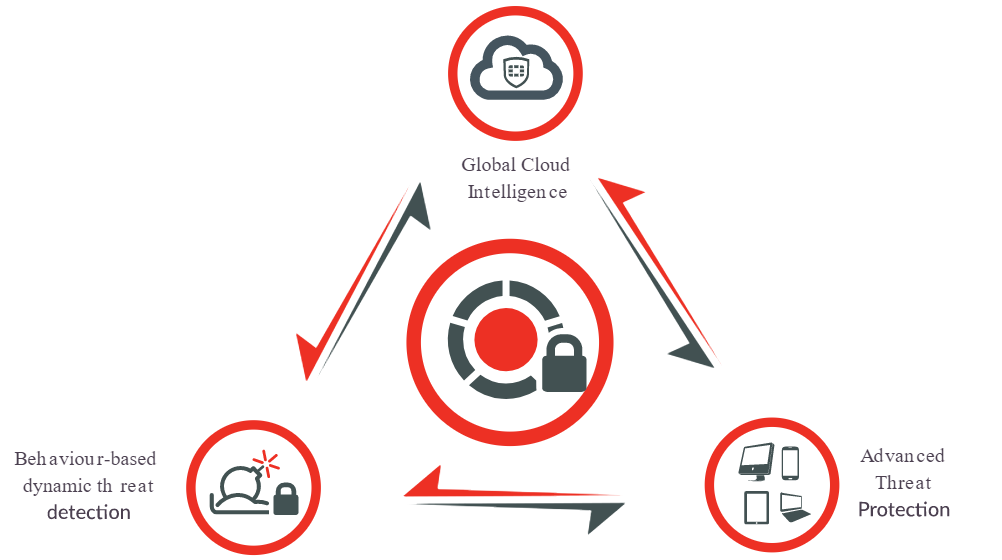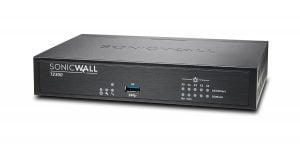The Jane Austen of Network Security? What on Earth does that even mean?
Well, the similarities are there:
- You’ve probably heard of it. In fact, it may be the first example that pops into your head when the subject is brought up.
- Someone you know probably has one, and they highly recommend it.
- Competitors are jonesing for a similar success story of their own.
- It’s been around for years and isn’t leaving anytime soon.
- Its popularity is based on the fact that the product is, in fact, really damn good.
- You can pick it up on the cheap (hence the cents) instead of dishing out big bucks on a hyped-up new release that you’re not sure you’ll even like.
Just as Jane Austen is an indisputable bestseller that can be trusted to fly off store shelves at a regular clip, the SonicWall TZ300 is one of the most popular next-generation firewalls sold across the web. These appliances are in high demand and this week we intend to parse out precisely why the second smallest of the SonicWall TZ series, the TZ300, is a timeless classic.
Some Quick Stats
Max speed: 1.3 Gbps
Interfaces: 7 x GbE, 1 USB, 1 Console
Optional Interfaces: 100+ add-on ports with X-Series network switches
Security Processors: 2 x 800 MHz
VLAN Interfaces: 25
Appliance-Only Price: $484.00
Deciphering the buzzwords
Enterprise-Grade Protection
The TZ300 is designed to provide the Maserati of network protection at the price-point of a Mazda. In short, the TZ300 is the Mazda Miata of firewalls. With the TZ Series, SonicWall committed to making cyber security bells-and-whistles accessible even to the small business owner who may not have the budget squirreled away for the info sec equivalent of a supercar.
The TZ Series utilizes the same code base and many of the same features as the SonicWall SuperMassive series, a series designed to provide security suitable for multinational corporations, hospital campuses, and far-flung remote databases. Not only does this mean that your network administrator will be treading familiar waters if they have previous experience with these bigger, badder SuperMassives, but it also means you can rest assured knowing you have access to some of the same tools, interfaces, and resources that cash-flush networking giants use.
Next-Generation Firewall
Firewalls have gotten clever. The firewalls of yesteryear amounted to not much more than a lightly-guarded gateway between your network and the outside world. However, the next generation of firewalls saw the rise of new, smarter features designed to up the work load on a firewall’s list of chores.
- SonicWall’s Reassembly Free Deep Packet Inspection (RFDPI) ensures that both inbound and outbound traffic is scanned and validated before passing through your perimeter.
- Intrusion Prevention Systems (IPS) actively work to keep network raiders at bay.
- Multiple security processors are constantly comparing data packets in your network environment to archives of threat signatures updated in real time.
Next-generation is a designation given to firewalls that act as more than just a slack-jawed bouncer standing in the doorway. Instead, the TZ300 is an active, efficient sentry prowling your perimeter.
Scalable
The TZ Series was built to work with your system, not in spite of it. A TZ300 added to an existing network can be easily monitored and managed remotely through SonicWall’s Global Management System (GMS). In addition, the sheer ease of setting up secure remote access through VPN tunnels qualifies the TZ300 as a fine contender when expanding networks to accommodate remote users.
The SonicWall TZ300 is scalable because it possesses the versatility required to fill many roles. When the needs of your organization evolve, you can trust the TZ300 to evolve with you.
Sandboxes & Signatures
Perhaps one of the most exciting aspects of the TZ300 is its compatitibility with SonicWall’s Capture Advanced Threat Protection (ATP). We wrote about Capture ATP in a previous blog post, so be sure to slide on over to that article for further details.
Capture ATP is a best-in-class sandbox client included in an Advanced Gateway Security Suite. With cloud-based signature scanning and three separate processing engines to triple-check against known threats, Capture ATP is the gold standard in network fortress-building. Most importantly, it catches zero-day threats like ransomware at the gateway and quarantines the malicious data until you decide its fate. With Capture ATP and a SonicWall TZ300, you’ll leave the next Petya or Wannacry stranded in limbo while your network carries on, uninterrupted.

Start your next chapter
It’s powerful. It’s affordable. It does everything you’re looking for, plus a little more. And that’s just a few of the reasons why the SonicWall TZ300 has secured its title as a best-seller. 1.3 gigs of throughput? Comprehensive security features? A sub-$500 price tag? Much like your favorite book, the TZ300 is a classic that you will keep coming back to time and time again.
CHECK OUT OUR TZ300 APPLIANCES, BUNDLES, RACK MOUNT KITS, AND SUBSCRIPTIONS
for a story you know will end happily ever after.














